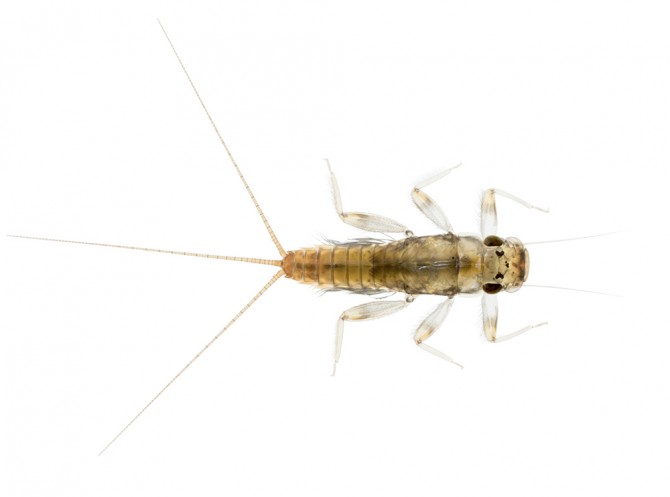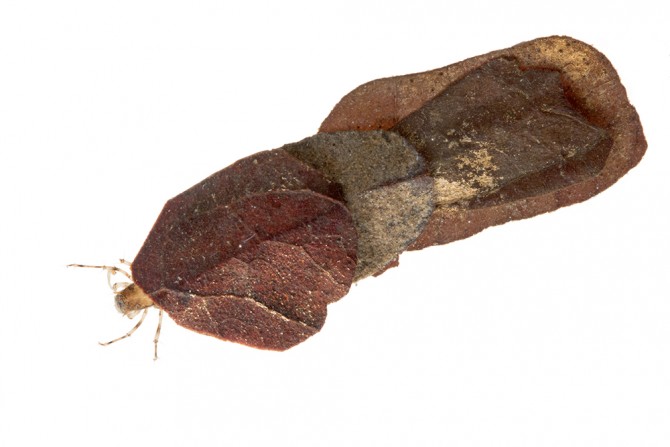Study reveals why tropical mountains are so biodiverse
By Krishna Ramanujan
Lack of varied seasons and temperatures in tropical mountains have led to species that are highly adapted to their narrow niches, creating the right conditions for new species to arise in these areas, according to a new study published Nov. 5 in the Proceedings of the National Academy of Sciences.
Still, the same traits that make tropical mountains among the most biodiverse ecosystems on Earth also make the species that live there more vulnerable to rapid climate changes, the study finds.
The research compares rates that new species evolve in three types of aquatic stream insects – mayflies (Ephemeroptera), stoneflies (Plecoptera) and caddisflies (Trichoptera) – in temperate and tropical mountain areas. The findings have implications for similar patterns in other tropical mountain species.
An interdisciplinary team of physiologists, geneticists and genomics specialists, population biologists and taxonomists from four universities – including Cornell – gathered samples and data from mountain streams in the Colorado Rocky Mountains and in the Ecuadorian Andes over a two-year period.
They then tested each species’ temperature tolerance, and analyzed the genetics of their populations to map their range of movement.;
“Because the tropics are not as seasonal as the more northern temperate zones, bugs in the tropics can’t get too cold or too hot, and thus they have a narrow thermal breadth,” said Kelly Zamudio, the Goldwin-Smith Professor in the Department of Ecology and Evolutionary Biology, and a senior co-author of the study. “We also found that they move less up and down the side of the mountain, and there are more species [on tropical mountains] as a result. Nobody had tested all three of those patterns in the same system before.”
Due to low tolerance for temperatures outside their narrow comfort zone, tropical mountain species don’t travel because changes in altitude quickly lead to temperatures to which they are not adapted. Lack of movement in turn limits gene flow and isolates individuals from adjacent populations. When populations are isolated over long time periods, genetic changes accumulate in the different populations, leading to the formation of new species.
Animals in temperate regions, on the other hand, are exposed to four seasons with very different temperatures, and thus are adapted to a broader range of temps, they move up and down mountains and share genes more readily between populations, which makes their populations more homogenous and less diverse, the researchers found.
The findings support and reveal the mechanisms behind a classic 1967 paper that predicted these dynamics.
Also, because tropical species can’t withstand large temperature shifts and have limited movement, they are much more susceptible to rapid temperature shifts due to anthropogenic climate change.
“It’s really paradoxical that the same factors that lead to a lot of species are the factors that are going to endanger those species in the tropics,” Zamudio said.
In the study, biologists at Colorado State University (CSU) led team members as they sampled insect communities in streams every 500 meters of elevation change, in Colorado and Ecuador, over a two-year period. Once they had samples across the elevation gradient for both places, taxonomists examined how many distinct species there were. They also looked for “cryptic diversity,” where populations are beginning to diverge to create new species but have not yet been detected.
Zamudio’s lab teamed with Chris Funk, professor of biology at CSU, to sequence swaths of the genomes of these insect species to see how much gene-sharing occurred among populations.
“We found that in the tropics, there is a lot less sharing of genes across these populations up and down the side of the mountain, and the number of migrants is much smaller,” she said.
Future work could include testing to see if the same patterns exist for other mountain species, including terrestrial animals, as well as further predictions of which populations will be most endangered.
Nicholas Polato, a postdoctoral researcher in Zamudio’s lab, is the paper’s first author. Co-authors include researchers from Colorado State University, Universidad San Francisco de Quito, Ecuador, and the University of Nebraska–Lincoln.
The study was funded by the National Science Foundation Dimensions of Biodiversity Program.
Media Contact
Get Cornell news delivered right to your inbox.
Subscribe


